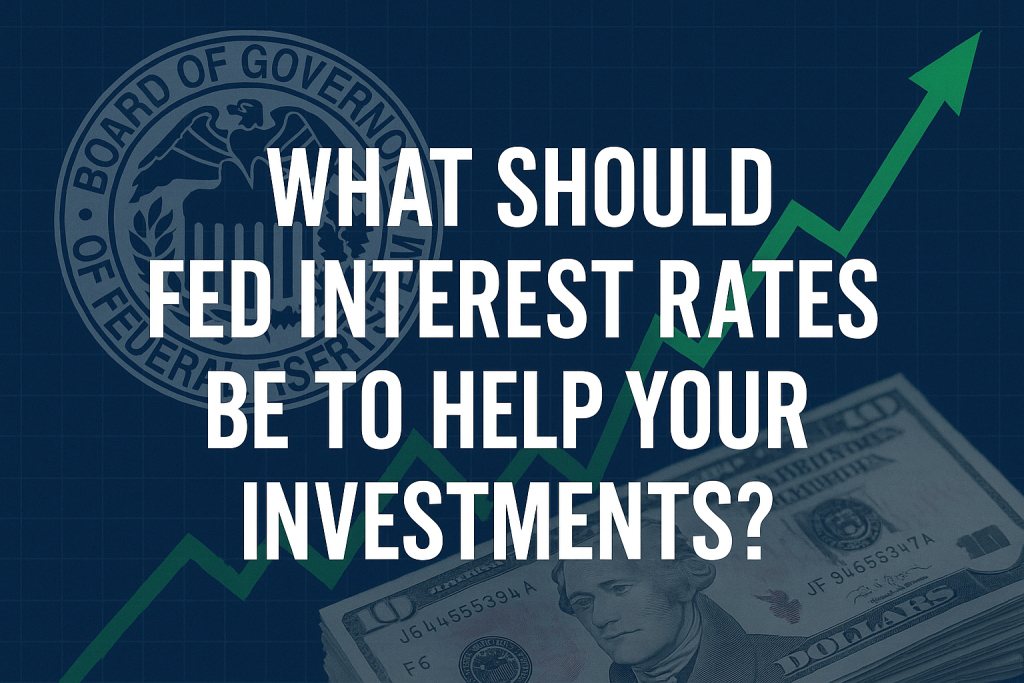The US Federal Reserve open market committee is responsible for setting the monetary policy of the United States. The committee, composed of 7 Fed Board of Governor members and 5 presidents if regional Reserve Banks, attempts to manage the availability and cost of credit in the USA by periodic adjustments of the federal funds rate.

The Federal Funds Rate
This tool of the open market committee is an interest rate range. It is the rate at which US banks can charge one another for very short overnight loans. Banks are free to negotiate the exact with the current rate mandated by the Federal Reserve. This rate works its way through the banking system and economy and eventually helps determine bank loan and mortgage rates, which, in turn, affects how expensive credit is. The point is that when the economy is running hot and inflation if raging, higher overnight loan rates work their way into how much people pay for a mortgage of a business pays to expand or simply maintain operations. Higher rates tend o slow the economy and lower rates tend to stimulate it. As goes the economy so go your investments. The question we pose is what rates are either good or bad for your investments and your pocketbook.
How Federal Funds Are Set-Employment Reports
The US Federal Reserve was set up by Congress in 1913 in order to help maintain financial stability in the USA. It’s job was primarily to help avoid runaway inflation. In 1977 Congress added another task, maintaining a healthy level of employment. Thus today’s Federal Reserve has a dual task of keeping the economy from throwing people out of work while keeping inflation in check. This is more of a balancing act that with their original mandate. As Fed Chairman Powell routinely says, their decisions are “ data driven.” The two big pieces of information they use are Department of Labor “Jobs Report,” produced by the Department of Labor Statistics division of the Department of Labor. The head of this department is OKed by Congress as both fiscal conservatives and liberals want to see clean, honest data. In our recent article about What Investment Information Can You Trust?, we noted that President Trump recently fired the head of the Bureau of Labor Statistics when their most recent report showed some of worst employment numbers since the pandemic.
How Federal Funds Rates Are Set-Inflation Reports
The second task of the Federal reserve, or the first historically, is to maintain US financial stability. Currently we have inflation and the Fed has raised interest rates. The current overnight loan rate dictated by the Open Market Committee is 4.33%. This rate was decided by the open market committee based on economic models that they use which are applied to the most recent economic data which includes consumer price index and inflation numbers. A current issue with the process of setting rates and the current rate is whether or not the model used by the Fed is correct is being questioned by President Trump, who would like lower rates to stimulate the economy and his Treasury Secretary, Scott Bessent. In a recent opinion piece, Where is Bessent pulling these rate models from on Bloomberg Bessent is quoted as saying that any model shows that the fed funds rate should be 1.5% to 1.75% lower than the current rate. Bloomberg comments that never in the history of the Fed has the fed funds rate been as low as the roughly 2.6% advocated by Bessent when inflation has been as high as it is. They go on to note that Bessent has not specified which of the “any models” would dictate such lower rates.
What Sorts of Interest Rates Are Best for Your Investments?
When the Fed cuts rates, stocks go up and when the Fed raises rates stocks go down. This is because of anticipation of how the rates will affect the economy. There are two parts here for investors to pay attention to. First of all, if you are trading short term, you can simply bet on “up or down” for rates and expect to get “down or up” on the stocks you are trading. However, if you are in it for the longer haul, which is where long term success in stock market investing has come from for decades, then you need to be able to rely on how accurately the Fed has assessed the situation, how good their models are, and how their rate adjustments will affect the economy at large and you investments in particular. The issue here is that if the open market committee reads the employment and inflation situation wrong they can screw up the economy and drive it into hyper inflation or crash it. In fact, by driving the economy into hyper inflation they may easily end up crashing it. To get good results from your investment efforts you need accurate data and the ability to foresee the economic future with reasonable accuracy. And you need to be able to trust the folks in charge to make decisions designed to improve the general good and not ones based on their popularity and political fortunes.